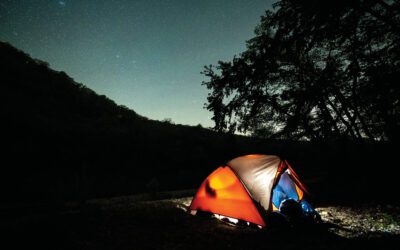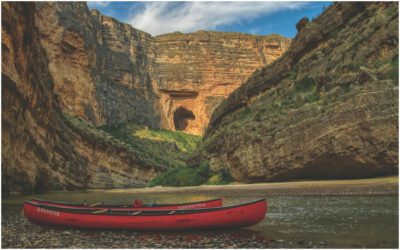[title subtitle=”WORDS Scott Faldon”][/title]
While most people let their fishing rods gather dust through the winter, it’s the perfect time to go trout fishing in our region. It’s also a great time to learn how to fly fish. While some people can be intimidated when they watch a skilled fly fisherman at work, the technique is not difficult to learn. In a short time, you can be catching fish on the fly.
Of course, you’ll first need a rod and reel. Most manufacturers offer kits with perfectly matched combinations and are ready to fish right out of the package. Fly rods are classified by weight with smaller numbers being the lightest. A 6-weight rod is usually the most versatile pick as it’s light enough to use for catching smaller fish like perch or bluegills but stout enough for larger trout or smallmouth bass.
Along with the rod and reel, you’ll need backing, fly line, leader and some tippet. The backing goes on the reel first and is used to fill the arbor. It also is extremely strong as it allows you to fight a fish that runs farther than your actual fly line. Fly line attaches to the backing and is matched to the weight of the rod. After that comes a clear leader, which helps hide the line from the fish. Finally, a piece of tippet is added, and your fly is tied to it.
The knowledgeable staff at your local fly shop can help you choose the right rod and reel and line. They can also help you with the basics of casting. Unlike fishing with conventional tackle, you aren’t actually casting the fly. It’s too light for that, so you’re actually casting the line itself. But remember, it’s not that difficult. In the simplest terms, imagine a watch face with the angler facing to the left. The angler will quickly raise the rod tip to 2 o’clock, pause, then quickly move it to the 10 o’clock position. That will cause the line to shoot forward toward the target in the water.
“The best way to learn to cast is to take some casting lessons from an experienced angler,” BJ Heilman, avid fly angler and gear manager at The Woodsman Company, said. “Also, hire a guide the first few times when you go. They can help improve your casting and teach you how to read the water for where the fish are located. Guides are a great way to learn when you’re starting out.”
Fly fishing has been a passion for decades of Bryan Dobbins, owner of The Woodsman. He agrees a good fly fishing guide can help beginners make quick improvements. “My thing has always been to say, ‘A good guide will help straighten out the learning curve,’” Dobbins said. As with any new hobby, practice time will be vital. Your backyard can be a perfect venue for grooving your muscle memory with a fly rod. But Dobbins insists beginners don’t need to worry if their cast isn’t that good – the main thing is have fun with it.
“Once you get the equipment, you can catch fish immediately,” Dobbins said. “But after that you’ll spend the rest of your life learning different aspects of the sport like controlling your cast or mending the drift of your fly. That can be a never-ending process. But we have guys who are champion fly casters who struggle to catch fish and expert anglers who can’t cast that well.”
Of course, you’ll need flies to catch anything. While local guides can give insight to what the trout are biting, old standbys like San Juan Worms and Wooly Buggers have caught millions of trout over the years. Bring a selection of flies in various patterns and experiment until you find the one the trout can’t resist. That’s the tackle portion of your checklist for fly fishing. But you’ll need some more accessories to make it an enjoyable day on the water.
If you’re planning on getting in the water, you’ll need a good pair of waders. They will keep you dry and warm, plus the soles on the boots will help you maintain your balance on any slick rocks in the river. A net is important when landing a trout – especially for catch-and-release fishing. A rubber net is easier on the fish than an old-fashioned nylon or rope net. A pair of forceps or small needle-nosed pliers will help you remove the hook from the trout’s mouth. Nippers (similar to fingernail clippers) will make it easier for you to clip your tippet when you need to change flies and to remove the tag end of the knot. Polarized sunglasses will help you see down into the crystal-clear water of most trout streams and protect your eyes from the sun bouncing off the water. Finally, warm clothing is a must. Layers are the key, as is avoiding cotton which retains water and won’t keep you warm if it gets wet. Don’t forget to pack some extras to leave in the car – just in case you get really, really wet.
Once you’ve got the basic casting technique down and your kit sorted, where do you go to catch a wintertime trout around here? Your options are only limited by how far you’re willing to drive. Within a few hours of Fort Smith, you’ll find some of the best trout fishing in the nation. The Little Red River produced the world record for a brown trout (40 pounds, 4 ounces) in 1992 and held it until 2009. In 2015, a 38-pound, 7-ounce trout was caught on the White River near Cotter. Just across the border in Missouri, their state record was broken twice in 2019 on Lake Taneycomo at Branson with a 40-pound, 6-ounce fish now holding the record.
But you don’t have to drive that far to catch trout this time of year. Wells Lake, Torraine Lake, Carol Ann Cross Park Lake and the Van Buren Municipal Lake are regularly stocked with rainbow trout by the Arkansas Game & Fish Commission during the winter.
Wintertime Trout Fishing Locations
(Local)
Wells Lake
Torraine Lake
Carol Ann Cross Park
Van Buren Municipal Pond
(Road Trips)
The White River
The Norfork River
The Little Red River
The Spring River
Dry Run Creek (limited to children and physically disabled anglers)
Lower Illinois (Oklahoma)
Roaring River State Park (Missouri)
Beaver’s Bend State Park (Oklahoma)
Wintertime Trout Fishing Needs
Fly rod and reel with backing, line and leader
Extra tippet
Flies
Net
Forceps or needle-nose pliers
Waders and boots
Warm clothing (with extras in the car – just in case you get wet)
Fishing license with trout stamp
Phone or camera to take photos of your catch
Planning your next outdoor adventure? Visit The Woodsman Company in Fort Smith, Arkansas for all your adventure needs!
5609 Rogers Ave, Suite D, Fort Smith, Arkansas
479.452.3559
thewoodsmancompany.com




